Transportation
- OED
- Indiana's Energy Policy
- Current: Transportation
Serving as the Crossroads of America, it comes as no surprise that a large portion of energy consumed in Indiana is related to the transportation sector. Transportation consumes roughly 21.5% of all energy in Indiana, and nearly 7% of that total comes from biofuels, such as ethanol or biodiesel. The transportation sector is rapidly evolving, and it is important that this transition is addressed strategically. There are growing options for Hoosiers to choose various fuels to best address their individual transportation needs. While many people think of electric vehicles, there are more options as well, such as propane powered vehicles, biofuels, and even hydrogen.
To learn more about the types of vehicle fuels in the state and how it trends over time, please visit the Indiana Vehicle Fuel Dashboard.
To find an alternative fueling station near you, please visit the Alternative Fueling Station Locator.
Electricity-powered transportation is a growing area of interest in the transportation sector, mainly through the rise of small- and medium-sized electric vehicles (EVs).
Generally speaking, time-of-use electricity rates and programs that encourage off-peak charging can help people and businesses reduce fueling costs. Although dependent upon fluctuating factors, generally, the maintenance cost to operate an EV can be lower than an internal-combustion engine.
Indiana is positioning itself to be a leader in the electric vehicle space, with companies like Stellantis and General Motors investing billions of dollars in Indiana to bolster EV battery and EV production. Indiana is also ranked one of the top 10 states in the country for university degrees relevant to EV/battery manufacturing, allowing Indiana to boast one of the most highly trained, work-ready labor forces in the nation.
Electric vehicles come in multiple forms. PEV, or Plug-in Electric Vehicle, is any vehicle that plugs in to recharge. These vehicles may or may not also have a gasoline engine on board. PEVs come in three types:
- BEV, or Battery Electric Vehicle, is a total electric vehicle that stores electricity in batteries
- PHEV, or Plug-in Hybrid Vehicle, primarily uses gasoline and is supplemented with electricity
- EREV, or Extended-Range Electric Vehicle, primarily uses electricity and is supplemented with gasoline
Indiana Fuel Vehicle Dashboard
Click here to review Indiana's Vehicle Fuel Dashboard. This feature provides public information about the types of vehicle fuels in the state and how they trend over time. Utilize the dashboard to explore vehicle registration counts for the entire state and filter the data by your specific interest: by county, year, fuel type, vehicle type, and/or weight category (for applicable vehicle types).
Electric Vehicle Charging Technologies
Since the majority of electric vehicle drivers commute 40 miles or less each day, home charging satisfies about 80 percent of the recharging needs. Additional charging locations – workplace and public locations – may add travel flexibility and build range confidence. Workplace charging accounts for about 10 percent and public charging provides for about 10 percent of the additional recharging needs.
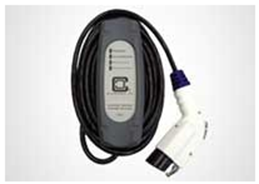
Level 1 Charger – Provides charging through a 120-volt AC outlet. Based on the battery type and vehicle, Level 1 charging adds 2-5 miles of range to an EV per hour of charging time.
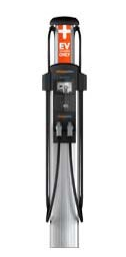
Level 2 Charger – Provides charging through a 240-volt AC outlet and requires installation of equipment and a dedicated electrical circuit. A Level 2 charger can easily charge a typical EV battery overnight.
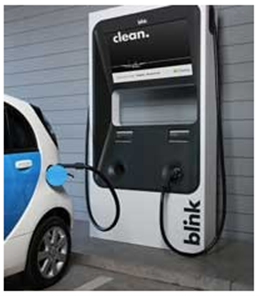
DC Fast Charger – Provides fast charging at sites such as heavy traffic corridors and public fueling stations.
Learn more about charging station infrastructure here.
Indiana has many electric charging infrastructure options across the state, in towns, cities and even in state parks like the Indiana Dunes or Turkey Run. Grant funding through OED has funded chargers throughout the state including Clifty Falls State Park.
EV Product Commission
During the 2021 legislative session, Governor Holcomb signed House Bill 1168 into law, establishing the Electric Vehicle Product Commission (Commission). The 10-member commission is comprised of legislative representatives and industry leaders who are tasked with:
- Evaluating the inventory of existing electric vehicle product facilities and production capability.
- Evaluate the inventory of skilled and nonskilled workers in the electric vehicle product industry.
- Evaluate opportunities and needs for training within the electric vehicle product industry.
- Determine if training centers promoting careers in the electric vehicle product industry should be created or transitioned from traditional automotive industry training centers.
- Identify existing manufacturing competencies within the traditional automotive industry and determine how the existing competencies could be leveraged to increase the production of electric vehicles.
- Identify and evaluate opportunities for growth within the electric vehicle product industry.
- Identify and document results from previous instances of retooling and transforming manufacturing facilities in the automotive industry.
- Identify opportunities for research and development within the electric vehicle product industry.
Previous meeting agendas and minutes for the Commission, including its annual reports, can be found here.
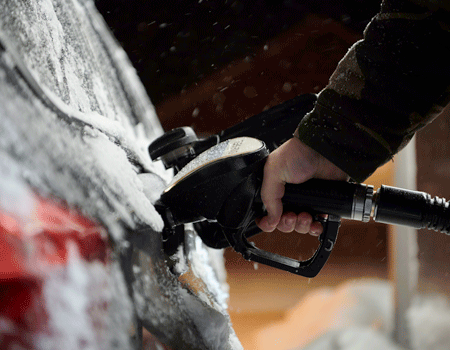 Indiana produced about 1.5 million barrels of crude oil in 2021. In fact, Indiana had the Trenton Field, which was discovered in the late 1800s in east-central Indiana, which was the nation’s first oil field to produce more than 100 million barrels of crude oil. At the turn of the 20th century, the center of Indiana’s crude oil production moved to the Illinois basin in southwestern Indiana, where output peaked at 13 million barrels a year in 1956. Although production has increased in 2021, Indiana is responsible for less than .04% of the nation’s total crude oil production. The below image shows oil and gas fields in Indiana, with oil being green, and gas being red.
Indiana produced about 1.5 million barrels of crude oil in 2021. In fact, Indiana had the Trenton Field, which was discovered in the late 1800s in east-central Indiana, which was the nation’s first oil field to produce more than 100 million barrels of crude oil. At the turn of the 20th century, the center of Indiana’s crude oil production moved to the Illinois basin in southwestern Indiana, where output peaked at 13 million barrels a year in 1956. Although production has increased in 2021, Indiana is responsible for less than .04% of the nation’s total crude oil production. The below image shows oil and gas fields in Indiana, with oil being green, and gas being red.
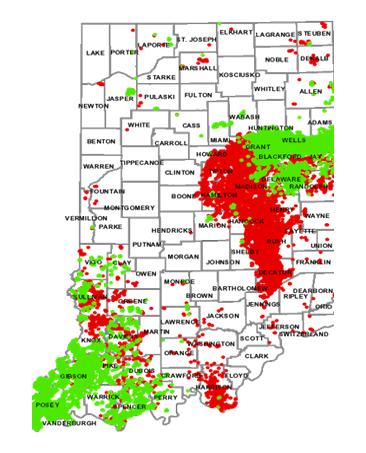
Figure 1: Oil and Gas fields in Indiana (Indiana Geological Survey)
Indiana has two petroleum refineries with a combined capacity of 463,800 barrels per calendar day or about 3% of the nation’s total. The Whiting refinery, located in Northwest Indiana, is the nation’s largest inland refinery, with only 5 gulf coast refineries having greater capacity. This refinery alone accounts for nearly 435,000 barrels of crude oil a day, and produces large quantities of motor gasoline, diesel fuel, and jet fuel, as well as about 7% of the nation’s asphalt. The CountryMark refinery processes 30,000 barrels per day and occupies a unique position in the industry as they process only domestic crude. Additionally, CountryMark owns 238 miles of underground pipeline allowing them efficiently transport finished product from refinery to their terminals in Indiana.
The transportation sector consumes more than three-quarters of the petroleum consumed in Indiana, with around half of that amount in the form of motor gasoline, and one-third mostly diesel fuel.
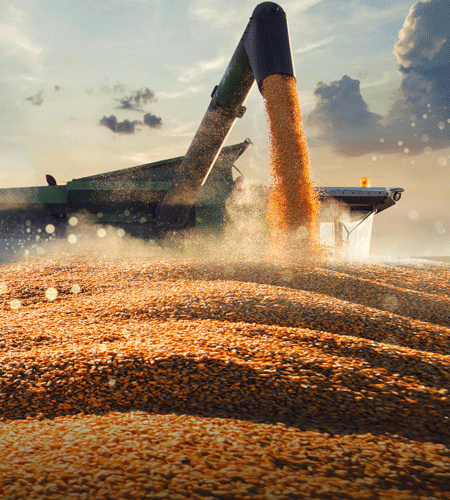 Every day, U.S. refiners are working hard to develop new solutions that provide the fuels needed to get the American people and their products from point A to point B, all while lowering emissions. Cleaner fuel technologies aren’t limited to cars, trucks, and SUVs. In Indiana, two refiners, BP and CountryMark, are leading implementation efforts for emerging energy technologies and infrastructure development. Unlike other renewable energy sources, biomass can be converted directly into liquid fuels, called "biofuels," to help meet transportation fuel needs. The two most common types of biofuels in use today are ethanol and biodiesel, both of which represent the first generation of biofuel technology.
Every day, U.S. refiners are working hard to develop new solutions that provide the fuels needed to get the American people and their products from point A to point B, all while lowering emissions. Cleaner fuel technologies aren’t limited to cars, trucks, and SUVs. In Indiana, two refiners, BP and CountryMark, are leading implementation efforts for emerging energy technologies and infrastructure development. Unlike other renewable energy sources, biomass can be converted directly into liquid fuels, called "biofuels," to help meet transportation fuel needs. The two most common types of biofuels in use today are ethanol and biodiesel, both of which represent the first generation of biofuel technology.
Ethanol
Ethanol is a renewable fuel that can be made from various plant materials, collectively known as "biomass." Ethanol is an alcohol used as a blending agent with gasoline to increase octane and cut down carbon monoxide and other smog-causing emissions. The most common blend of ethanol is E10 (10% ethanol, 90% gasoline). Some vehicles, called flexible fuel vehicles, are designed to run on E85 (a gasoline-ethanol blend containing 51%–83% ethanol, depending on geography and season), an alternative fuel with much higher ethanol content than regular gasoline. Roughly 97% of gasoline in the United States contains some ethanol. Most ethanol is made from plant starches and sugars, but scientists are continuing to develop technologies that would allow for the use of cellulose and hemicellulose, the non-edible fibrous material that constitutes the bulk of plant matter. In fact, several commercial-scale cellulosic ethanol bio-refineries are currently operational in the United States. The common method for converting biomass into ethanol is called fermentation. During fermentation, microorganisms (e.g., bacteria and yeast) metabolize plant sugars and produce ethanol. Click here to learn more about ethanol.
Nearly half of all the corn produced in Indiana goes towards the production of ethanol. According to the U.S. Energy information Administration, Indiana ranks 6th in the nation for ethanol production, producing more than 1.3 billion gallons of ethanol a year, producing 8.1 percent of the nation’s total ethanol. Indiana’s 15th ethanol plant is expected to go online in 2023. Additionally, the Indianapolis 500 uses E85 mix to fuel the cars.
Biodiesel
Biodiesel is a liquid fuel produced from renewable sources, such as new and used vegetable oils and animal fats and is a cleaner-burning replacement for petroleum-based diesel fuel. Biodiesel is produced by combining alcohol with vegetable oil, animal fat, or recycled cooking grease. Like petroleum-derived diesel, biodiesel is used to fuel compression-ignition (diesel) engines. Biodiesel can be blended with petroleum diesel in any percentage, including B100 (pure biodiesel) and, the most common blend, B20 (a blend containing 20% biodiesel and 80% petroleum diesel). Biodiesel performs at a similar caliber to U.S. diesel fuel. A blend of 20 percent biodiesel and 80 percent diesel fuel provides similar fuel economy, horsepower, torque, and haulage rates as diesel fuel. It also delivers a significant boost to lubricity compared with petroleum diesel fuel. According to a test by Stanadyne Automotive Corp, even a 2% blend of biodiesel increases lubricity by 66%. Biodiesel is also safe for diesel engines and unlike other additives that increase lubricity, biodiesel will not cause filter, fuel system or injector problems. Click here to learn more about biodiesel. Indiana has several laws and incentives on the books related to biodiesel, varying from definitions for alternative fuels, to tax exemptions for certain biodiesel blends. To learn more about these incentives, click here.
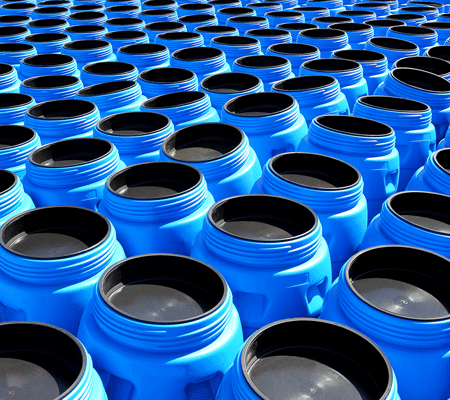 While gasoline and biofuels make up the large majority of fuel consumption in the transportation sector, other resources have been used for fuel, and new resources continue to be developed. Some of these fuels include propane, compressed natural gas (CNG), and hydrogen.
While gasoline and biofuels make up the large majority of fuel consumption in the transportation sector, other resources have been used for fuel, and new resources continue to be developed. Some of these fuels include propane, compressed natural gas (CNG), and hydrogen.
Propane
Propane in the transportation sector in Indiana is primarily in the form of propane powered school buses. Around 4% of all school buses in Indiana are powered by propane. Indiana is also one of the nation’s largest producers of propane, and many farmers use propane for drying crops before harvest. Additionally, many Hoosiers utilize propane to heat their homes. In recent years and prior to the COVID-19 pandemic, Indiana was among several Midwestern and Southern states where manufacturing accounted for the largest share of the state’s employment. Columbus, Indiana, is home to global engine manufacturer Cummins Inc., which is partnering with the Propane Education & Research Council on a propane-fueled engine for propane delivery and other applications.
Compressed Natural Gas
Compressed natural gas (CNG) is natural gas that has been compressed to less than 1% of its volume under standard atmospheric pressure. CNG is stored in tanks at a pressure of 3,600 PSI. All natural gas fueling systems and conversions have to comply with emissions standards set out by the Environmental Protection Agency (EPA) or the California Air Resources Board. While CNG and conventional fuels have similar fuel economies, CNG has a lower energy density than conventional fuels, and can benefit from an additional storage tank to increase the range of a CNG vehicle. Over the past two decades, the price of CNG has been consistently lower than the price of diesel and gasoline. This will result in fuel savings for fleets that switch to CNG. The stability of CNG prices also insulates fleet owners from shocks caused by the price volatility of conventional fuels.
CNG is a flammable gas that is stored at high pressures and requires different safety considerations from conventional fuels. Although CNG is naturally odorless, an odorant is added to CNG to alert drivers and fuel managers to potential leaks.
Hydrogen
A new development in the transportation sector comes in the form of hydrogen. Hydrogen in the transportation sector is mainly used in the form of hydrogen fuel cells and holds benefits for medium to heavy-duty vehicles. This technology combines hydrogen and oxygen to produce electricity and water, which can be used in transportation as an alternative fuel. Much of the ongoing hydrogen fuel cell research and development within the transportation sector is about incorporation into larger vehicles and freight, including shipping trucks, boats, rail, and aviation. Since 2015, there are three hydrogen-powered cars on the market form three different companies: Honda, Hyundai, and Toyota. Indiana currently does not have hydrogen fuel stations.
